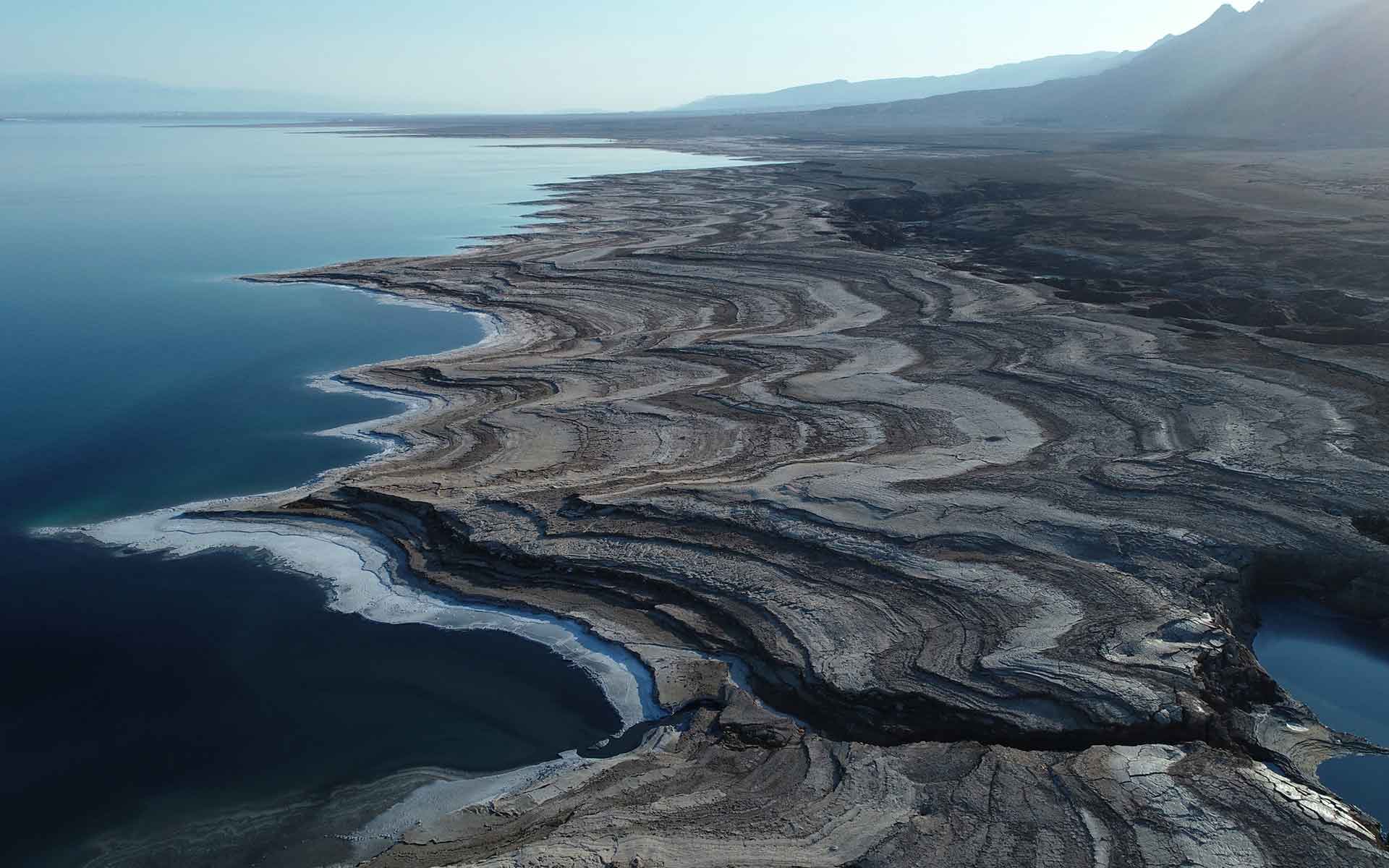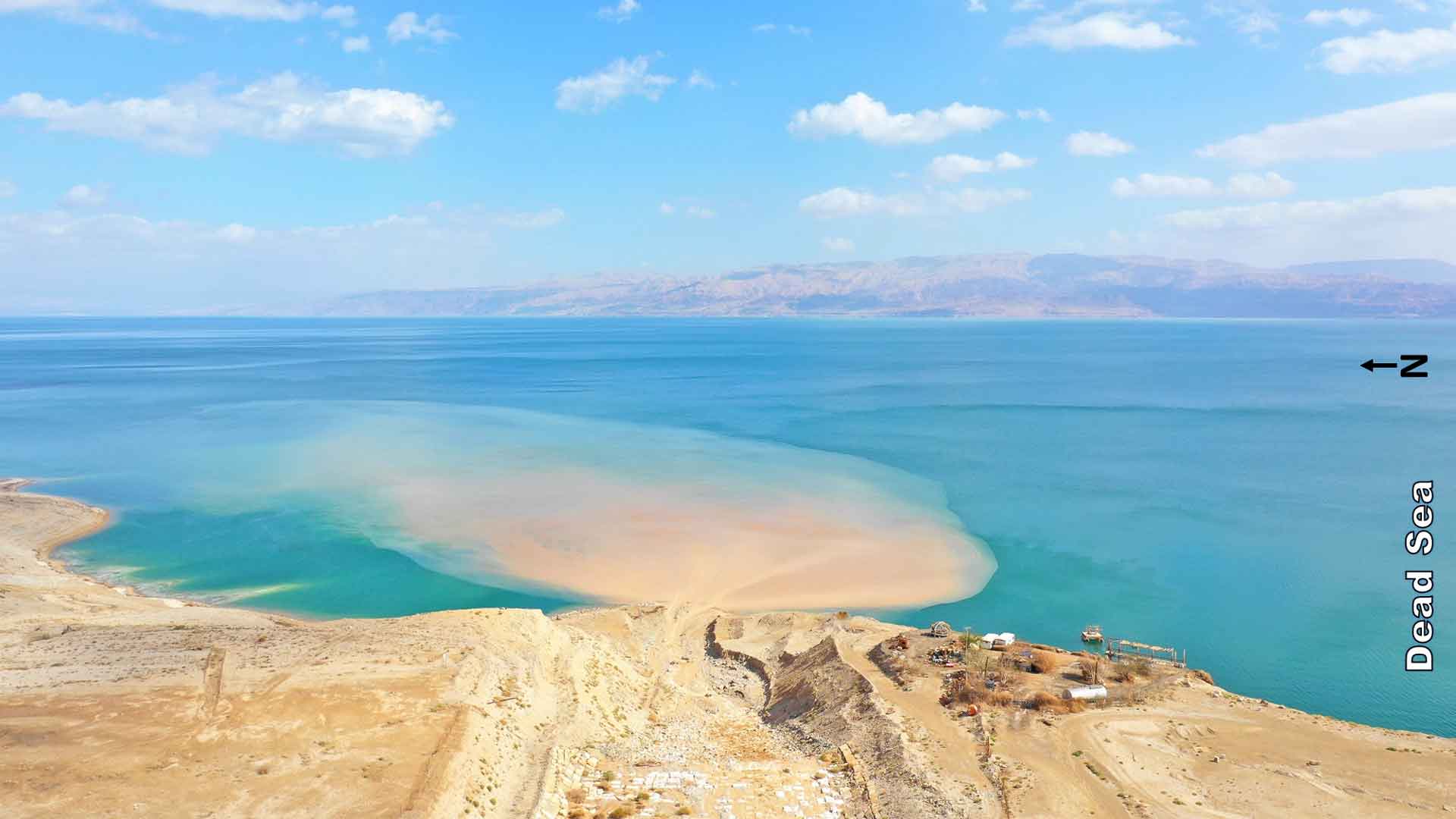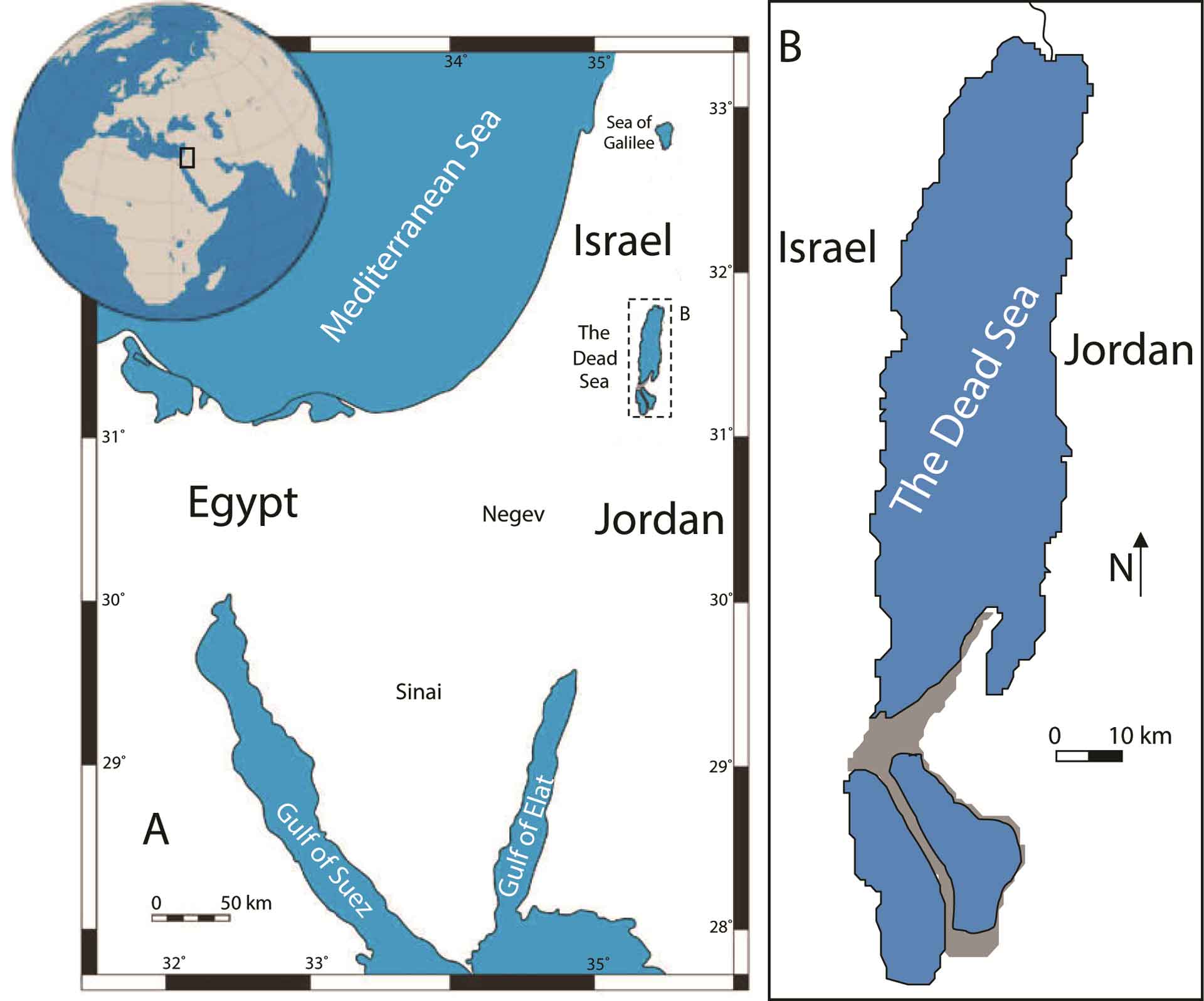
Geomorphological and geochemical processes along the Dead Sea. Previous shorelines showing a ‘Staircase’ morphology, halite deposits, and a sinkhole. Photographer: Liran Ben Moshe.
Geological Period
Holocene
Main geological interest
Stratigraphy and sedimentology
Geomorphology and active geological processes
Location
Levant, Israel and Jordan
31°33’32”N, 035°28’24”E
Geomorphological and geochemical processes along the Dead Sea. Previous shorelines showing a ‘Staircase’ morphology, halite deposits, and a sinkhole. Photographer: Liran Ben Moshe.
The Dead Sea is an excellent site for observing geomorphological, sedimentological, lacustrine, and geochemical processes and studying tectonics and paleoclimate.
The Dead Sea is a terminal hypersaline lake, along a plate boundary, containing an unparalleled record for deciphering tectonic and climatic history. Changes in the lake environment and composition are prime examples of rapid geomorphological development and brine evolutionunder extreme conditions. Lake bed sediments provide an excellent record of paleoclimate shifts, historical and paleo seismology, and more. The lake’s chemistry developed through extreme evaporation and interaction with local rocks and is a unique example of brine development in an arid area. Continuous rearrangement of the shoreline, channels, and sinkholes around the lake opens a window to geomorphological processes.
- Geological description
The Dead Sea is a unique hypersaline lake. Situated in a pull-apart basin along an active plate boundary, at 437 meters below sea and continuously decreasing, it is the lowest place on Earth. The lake is an exemplar of geomorphological and limnological development serving as a natural laboratory for understanding sedimentological, geochemical, tectonic, seismological, and climatic history in an important region for human cultural development (Ben-Avraham et al., 1997; Enzel et al., 2006). The Dead Sea brine originates from an ingression of the Mediterranean flooding the basin. Climate change induced shifts in the water volume and composition, leading to three successive ’amplifier lakes’, the current Dead Sea succeeding Lakes Amora (740-70 ka) and Lisan (70-14 ka). Sediments deposited from these lakes provide an excellent paleoclimatic record (Stein and Goldstein, 2020). A negative water balance during dry periods drives the evolution of the lake and its surroundings. Receding shorelines continuously rearrange the beach, channels, and regional hydrology, causing extensive sinkhole activity. Increasing brine density and saturation following evaporation also cause changes in lake stratification and mineral deposition. For several millennia, the lake’s beautiful settings and unique properties captivated travelers’ minds. The lake’s distinctive geologic history and characteristics are the basis for ongoing research.
- Scientific research and tradition
An 1847 expedition led by William Lynch determined the Dead Sea lies 400 meters below sea level (Lynch, 1849). Ever since, hundreds of publications covering all aspects of Earth science originated from researching the lake, which remains a valuable source of knowledge, leading to dozens of publications a year.
- Reference
Ben-Avraham, Z., Gat, J. and Niemi, T.M. (eds) (1997) The Dead Sea: the lake and its setting. Oxford University Press (Oxford Monographs on Geology and Geophysics, 36). Available at: https://cris.tau.ac.il/en/publications/the-dead-sea-the-lake-and-its-setting.
Enzel, Y., Agnon, A. and Stein, M. (eds) (2006) New Frontiers in Dead Sea Paleoenvironmental Research. Geological Society of America (Geological Society of America Special Paper, 401). Available at: https://doi.org/10.1130/SPE401.
Lynch, W.F. (1849) Narrative of the United States’ expedition to the river Jordan and the Dead Sea. Philadelphia: Lea and Blanchard publishing. Available at: http://archive.org/details/narrativeofunite00lyncrich.
Stein, M. and Goldstein, S.L. (2020) ‘The ICDP Dead Sea deep drilling project – introduction’, Quaternary Science Reviews, 249, p. 106639. Available at: https://doi.org/10.1016/j.quascirev.2020.106639.
- Author(s)
Amit G Reiss.
Rice University. USA.
Uri Schatnner.
University of Haifa. Israel.
Ran N Nof.
Geological Survey of Israel.
Michael Lazar.
University of Haifa. Israel.
Nurit Shtober-Zisu.
University of Haifa. Israel.
Michal Rosenthal.
Israel Geological Society.
Lior Kamhaji.
Israel Geological Society.
Yoav Nahmias.
Geological Survey of Israel.


